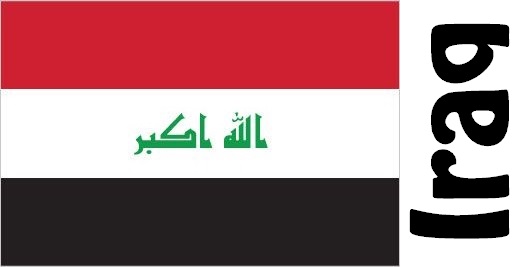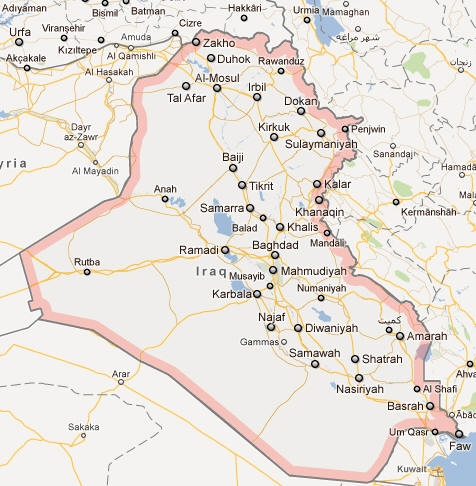Iraq Facts
Iraq, Middle Eastern state; 438,300 km², 38.4 million residents (2019).Iraq borders in the south to Saudi Arabia and Kuwait, in the west to Jordan and Syria, in the north to Turkey and in the east to Iran. At Shatt al-Arab in the south-east there is a narrow connection with the Persian Gulf. The capital is Baghdad, which in 2015 had 8.8 million residents.

Country facts
- al-Jumhūrīya al-raIraqiyya / Republic of Iraq
- Country abbreviation: IQ
- Area: 438 300 km²
- Population (2019): 38.4 million residents
- Capital: Baghdad
- Main languages: Arabic
- State: Republic
- Head of State: Barham Salih (President)
- Head of Government: Muhammad Tawfiq Allawi
- Per capita GDP (2018): US $ 5,878
- GNI per capita (2018): US $ 5,030
- Currency unit: 1 Iraqi dinar = 1,000 fils
- Currency code: IQD
- Country number (telephony): 964
- Internet Domain Name: iq
- Time difference compared to Sweden: +2
- National Day: July 17 (Revolution Day, 1968)
- Independence Day: October 3, 1932
Nature
- Land use: forest (0.4%), agricultural land (13%), other (87%)
- Highest mountain: Rawanduz (3,658 m above sea level)
- Longest rivers: Euphrates (2,800 km), Tigris (1,900 km)
Population
- Population density (2019): 88 residents per km²
- Natural population growth (2019): 2.4%; birthrate 29 ‰, death count 5 ‰
- Age structure (2019): 0-14 years (39%), 15-64 (58%), 65- (3%)
- Average life expectancy (2019): men 68 years, women 72 years
- Infant mortality (2019): 23 per 1,000 live births
- Population forecast 2050: 71 million residents
- HDI (2017): 0.685 (place 120 of 189)
- Urbanization rate (2019): 71%
- Most populous cities (2015): Baghdad (8.8 million residents), Mosul (664,200)
Business
- Industry’s contribution to GDP (2017): agriculture (3%), industry (51%), service (46%)
- Exports (2017): US $ 61,400 million
- Main export product: oil
- Main exporting countries: India, China, USA
- Imports (2017): US $ 39,470 million
- Main import products: food, medicine, industrial goods
- Main importing countries: Turkey, China, South Korea
- Railway network (2012): 2,300 km
The central part of Iraq is a lowland between the Iranian border mountains in the east and the Syrian-Arab plateau in the west. The area is occupied by the Euphrates and Tigris, and its flat river plains slowly descend towards the Persian Gulf. The southern part is largely marshland, river arms and lake-like water areas, while the north forms an open high plain. West and south of the Euphrates invade the Arabian Peninsula’s plateau. Summer is generally hot and dry, while winter is mild in the south and cold in the north.
According to the constitution, the president mainly has ceremonial functions and is elected by Parliament for four years. Legislative power lies with Parliament and the upper house. Parliamentary elections are held every four years while the House of Representatives is appointed by the provinces. Iraq became independent in 1932.
The country’s economy has been completely dominated by oil in modern times. The 1990 UN embargo in connection with Iraq’s attack on Kuwait brought a halt to the country’s oil exports. In December 1996, Iraq was allowed to re-export oil, though to a very small extent and under strict UN supervision. Export revenues were earmarked for reconstruction work and food imports.
The military defeat of the US-led coalition in 2003 meant, among other things, that the country’s financial administration and parts of the private industrial sector stopped functioning. Construction work is ongoing, but it is expected to take a long time and in the meantime the state has large costs as a result of subsidies on food, oil, fuel and electricity.
Since the middle of the 1990s, corruption within the state apparatus has also increased alarmingly, and the country’s economy is burdened by an oversized state administration and inefficient tax collection.
Iraq Map














































